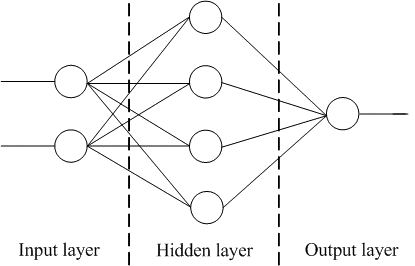Actuality
The electric drive (ED) control systems (CS), built on traditional methods, do not use modern information technologies. As a result application of such systems for the control of complex dynamic objects results in the decline of control quality. This failing deprived CS on the basis of inversion neural networks (INN) which belong to intellectual CS. Neural networks (NN) is one of basic architectural principles of the construction sixth generation COMPUTER. Also, it should be noted that particular interest to NN is determined by the variety of their possible applications. On the basis of the mentioned assertions, it is possible to do a conclusion that the INN research is actual.
Purpose of work
Analysis of job performances of ED CS on the basis of INN and estimation of possibility neural networks methods application for the control of ED.
Contents of work
Calculable structures consisting of plenty of the same types elements are implied under INN. Each of these elements executes relatively simple functions. An artificial neuron, which is the model of living neuron, is the elementary functional module INN. They are similar however only in sense of the transformations carried out to them, instead of method of functioning.
INN consists of aggregate of neurons located on layers and linked among them.
We will consider the practical application INN as an inversion neural model (INM), which use for the control of direct current ED by system of thyristor converter-motor (TCM).
An inversion model is intended for reproduction of entrance signal of object of the control UC* at its certain output signal  .
.
In this case the TCM system is a controlled object. For the synthesis of the INM system TCM it is necessary to get experimental descriptions of its work. For their receipt we use the block diagram of TCM system, the model of which we make by the blocks of the Simulink package MATLAB.
On the fig. 1 rationed block diagram of the TCM system is shown.

Figure 1 – The rationed block diagram of the TCM system
For the design the TCM system with the following parameters was used:
TCV = 7 ms; TA = 10 ms; TÌ = 100 ms;  .
.
On the fig. 2 animated presentation of structure of the synthesized system TCM INM is shown.

Figure 2 - Animated presentation (cycling - 10) of the INM structure
The obtained INN is used in accordance with the functional diagram shown on fig.3. It is placed in a direct channel consistently with the controlled object – the TCM system. Thus to the INM entrance a signal from the set-point device of the intensity (SDI) output USDI* and signal of working error  are given.
are given.

Figure 3 - INM chart use for the control of the direct current ED by system of TCM
On the figure 4 the results of the synthesized system performances with INM from SDI (current of the armature IINM* and speed  ) are shown. Also, for comparison, on this figure transitional processes are shown during work from SDI on trapezoidal tachogram the openloop system TCM (ITCM* and
) are shown. Also, for comparison, on this figure transitional processes are shown during work from SDI on trapezoidal tachogram the openloop system TCM (ITCM* and  ) and the subordinated control system of speed (SCSS) – (ISCS* and
) and the subordinated control system of speed (SCSS) – (ISCS* and  ).
).

Figure 4 - Transitional processes in the system with INM, SCSS and openloop system TCM during work on trapezoidal tachogram from SDI
On the fig. 5 transitional processes in the system with INM are shown, in SCSS and the openloop system TCM at the nominal load-on.

Figure 5 - Transitional processes in the system with INM, SCSS and openloop system TCM at the nominal load-on
It is visible from the fig. 4, that the best high-quality indexes take place during work of adjusted on the module optimum of double-loop single integrate SCSS, and worst – at working off the signal of task in the broken t system TCM.
The system with INM in the channel of control has the greater fast-acting, than the openloop system TCM, a little yielding on this index SCSS.
It is visible from the fig. 5, that minimum error on speed at the nominal load-on provides SCSS. In the system with INM this error a little more than in SCSS, but here twice less, than in the openloop system TCM.
Conclusion
As a result of the conducted researches, it is possible to mark both advantages and lacks of the NN use as the inversion model of the TCM system for the direct current ED control.
Advantages:
- Possibility of improvement of quality of transitional processes during work of the system.
- Diminishment of static error on speed in the system at the load-on.
- Absence of necessity of knowledge of parameters of object of control for the INM synthesis.
Deficiencies:
- Presence of the promoted requirements to hardware and software parts of the control system.
- Absence of possibility of limitation of armature current.
On the whole, the obtained results show, that the INM application for the control of direct current ED is expedient.
DonNTU > Master's portal > Autobiography | Abstract | Library | Links | Report about the search | Individual task